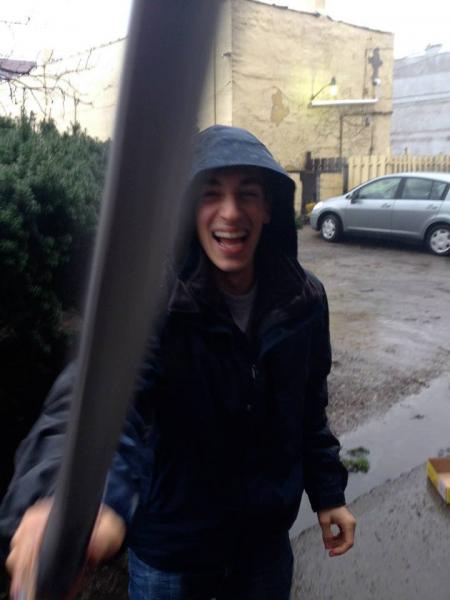The Invisible Homeless Population of Pittsburgh
Through my second year of service at Children’s Hospital of Pittsburgh of UPMC in the Division of Adolescent and Young Adult Medicine I have tailored my skills to provide effective health education and increase access to quality care for the young people I serve. At the same time I provide direct service to youth and young adults, I am addressing a major public health need: homelessness.
Jake at Summit V: Stuck In Survival, addressing homeless youth in Pittsburgh
When one thinks of people who are homeless, they often form the image of the older man or woman sitting on the street or hanging out in a park with their belongings. Youth experience homelessness too, but many people don't realize the extent of youth homelessness because many of them go about their lives looking and acting like any other young person. When I see a client walking down the street, I have the priviledge of knowing their situation, but others in the city suspect they are no different. Because youth who are homeless tend to hide their situations, and because many youth who are homeless are couch surfing with friends, or are displaced with their families, I believe these young people are esssentially invisible.
In winter 2011-2012, a local drop-in center specifically for homeless youth closed its doors due to a loss of funding. A group of passionate leaders who provide services in the homeless community came together and formulated a plan to get these vulnerable youth and young adults off the cold streets and into a warm, safe space during the day. My site mentor, Dr. Miller, was one of these impassioned leaders and was able to bring her experience from providing services at drop-in sites in Sacramento from her previous position to Pittsburgh. Next month, Service Access for Youth will celebrate its third anniversary of providing culturally competent clinical and social services to youth and young adults in Pittsburgh who are experiencing, or are at risk of, homelessness.
Youth at SAY enjoy a special meal on Christmas Eve at the Gay and Lesbian Community Center (GLCC)
Service Access for Youth (SAY) is where I spend a majority of my time. Every day the center opens at 12 noon and the young people start streaming in. Besides myself, my team consists of social work interns from the University of Pittsburgh’s School of Social Work, a nurse and nurse practitioner from Healthcare for the Homeless, a volunteer for the Gay and Lesbian Community Center (where the program is held), volunteers from Homeless Children’s Education Fund, and other people from various organizations who are asked to come and provide various services that we are not able to give, such as legal help, art therapy, and resourcing by the Department of Human Services. In general, we provide a safe space where young people can come and hang out, get a hot meal, and get hooked up with services. As the AmeriCorps member, I enroll our clients in health insurance and public benefits, help them locate stable food sources, write a resume and search for appropriate jobs, assist them in the community closet to find hygiene products and clothing that fits them, and provide assistance finding stable housing or shelter.
My main goal at SAY is to connect clients to our primary care clinics held right at the drop-in center. Every Monday I partner with a nurse from Healthcare for the Homeless as she sees patients and we conduct patient education on anything from general hygiene to flu shots, healthy relationships, safe sex practices, and harm reduction. On Wednesdays, I work closely with a nurse practitioner to provide for all of our patients’ needs, both health-related and not. Almost all of the young people coming to see the RN or NP at the drop-in center are homeless, whether living on the street or in a shelter, are uninsured, and are in need of physical and mental health care. As a future physician, I have learned so much about providing holistic, patient-centered care that provides quality preventive and routine primary care for marginalized youth; this care focuses on having the young person identify their own needs and goals, and work to achieve those goals, as well as provide a care plan that fits their current living situation and abilities. I am so humbled by my clients’ resilience and it is such an honor hearing their stories as I support them as they work through this very difficult period of their lives.

Look, two years of AmeriCorps IS fun!!